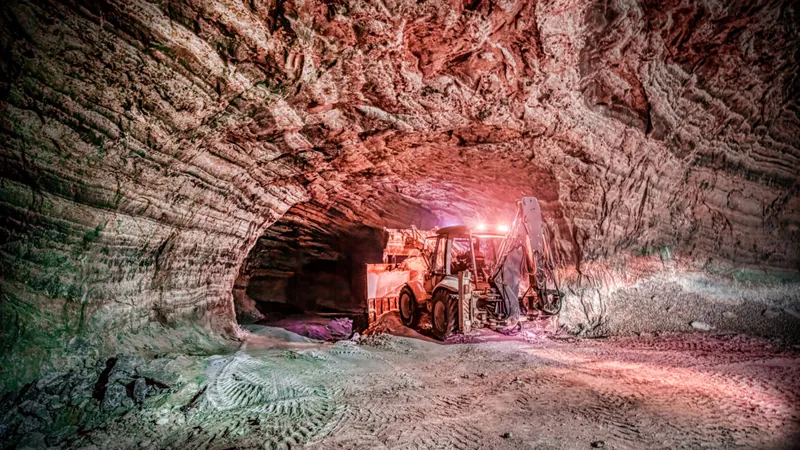
Unveiling the Hidden Microbial Ecosystems Beneath Earth's Surface
2025-01-20
Author: Chun
The Underground Wonders: A New Perspective on Life
Historically, scientists considered the surface of the Earth, illuminated and warmed by the sun, as the prime environment for life’s diversity. However, fresh findings are shifting this perspective. The study, published in Science Advances, asserts that these subsurface ecosystems might harbor over half of all microbial cells on Earth.
Ruff’s research employed a comprehensive approach, sampling microbial communities from diverse locations across the globe—from arid deserts and aquatic springs to the frigid depths of the ocean and beyond. This unprecedented study compares the life found in the surface with that hidden beneath, venturing deep into mines and boreholes to collect samples from rocks, aquifers, and sediments.
Discovering the Depths of Diversity
Insights from this study reveal that species richness and even abundance within many subsurface environments can compete with or even excel beyond those found in surface environments. Remarkably, subsurface archaea demonstrated their highest diversity in environments such as saline brines, caves, and cold oceanic seeps, while bacteria exhibited significant diversity in marine sediments and subterranean caverns.
Among the key players in these microbial communities are phyla such as Euryarchaeota and Asgararchaeota, with the former known for thriving in extreme conditions and producing methane—a valuable resource in energy production. The presence of these archaea opens up intriguing questions about energy cycles and life’s adaptability to harsh conditions.
An Unexpected Revelation: Depth vs. Diversity
Perhaps the most astonishing discovery involves the relationship between depth and microbial diversity. Contrary to expectations that energy scarcity would lead to reduced diversity, researchers found a surprising uptick in both bacterial and archaeal diversity as depth increased. This trend was observed in terrestrial environments, though marine environments showed different patterns.
Remarkably, some microbes may have adapted to these extreme conditions by significantly slowing their metabolic processes, raising the possibility of life forms enduring for decades or even centuries before dividing.
Implications for Life Beyond Earth
The implications of Ruff’s research reach far beyond our planet. The adaptation mechanisms of these sub-surface microbes could provide crucial insights into the search for extraterrestrial life. Mars, for example, with its challenging surface conditions, might be home to similar resilient life forms that thrive in harsh environments.
“Understanding deep life on Earth could shape our quest for signs of life on Mars, and help determine if it has or still does survive,” Ruff noted in a recent press release.
As exploration technology advances, we may one day retrieve samples from several kilometers below the Martian surface, revealing whether life exists beyond our own world. In the meantime, this vibrant, unseen aspect of Earth continues to inspire wonder and inquiry—hinting at the complex, dynamic processes that sustain life far beneath our feet.
Stay tuned as scientists delve deeper into this fascinating frontier, uncovering more secrets held by the Earth and perhaps others yet to be discovered, like Mars.
Published in Science Advances, 2024. DOI: 10.1126/sciadv.adq0645



 Brasil (PT)
Brasil (PT)
 Canada (EN)
Canada (EN)
 Chile (ES)
Chile (ES)
 Česko (CS)
Česko (CS)
 대한민국 (KO)
대한민국 (KO)
 España (ES)
España (ES)
 France (FR)
France (FR)
 Hong Kong (EN)
Hong Kong (EN)
 Italia (IT)
Italia (IT)
 日本 (JA)
日本 (JA)
 Magyarország (HU)
Magyarország (HU)
 Norge (NO)
Norge (NO)
 Polska (PL)
Polska (PL)
 Schweiz (DE)
Schweiz (DE)
 Singapore (EN)
Singapore (EN)
 Sverige (SV)
Sverige (SV)
 Suomi (FI)
Suomi (FI)
 Türkiye (TR)
Türkiye (TR)
 الإمارات العربية المتحدة (AR)
الإمارات العربية المتحدة (AR)